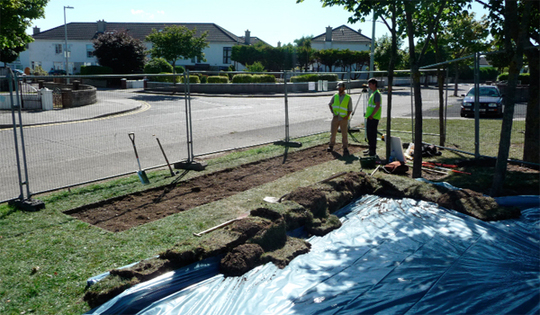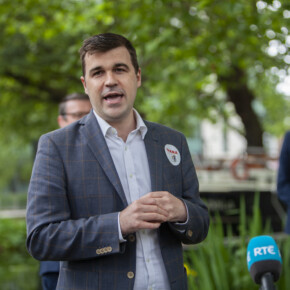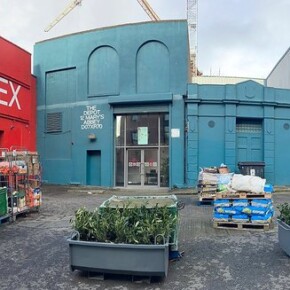Archaeology find exceeds expectations
Dublin People 15 Jun 2014
IN September 2013, Northside People reported how a local archaeologist made a startling discovery close to his parents’ house in Baldoyle.
At the time, Paul Duffy believed he might have discovered a rare 13th-14th century enclosure of which there are only four others recorded in the county of Dublin.
A community project,
‘Grassroots Archaeology’, established following the find, turned heads when it opened up several trenches in the gardens and council green space of Seagrange housing estate.
The project, run by local archaeologists and historians, aimed to answer the intriguing question: Can archaeology survive in a heavily constructed suburb? Paul is delighted to answer: yes it can!
The excavations, which ran from June to September 2013, uncovered features, layers and finds which far exceeded original expectations.
In addition to evidence of farming, metalworking, glass working and exploitation of the shellfish found along the nearby seashore, several prehistoric flint artefacts were discovered.
While many of these artefacts were found in the ploughsoil that had been disturbed over centuries of farming on the site, several intact layers and features were discovered.
Paul explained that excavation is really only the first step in archaeological investigation.
“By carefully sieving and washing soil and finds from intact archaeological layers, a surprising amount of information can be retrieved,
? he told Northside People.
“Once all of the finds and samples from Baldoyle were collected, they were then sent on to be examined by various specialists around the country.
“Carbonised seeds and grain, animal bone, medieval pottery, glass fragments and flint tools were all meticulously analysed.
“Many months later, the results are finally in and the picture they paint is a vivid one. At Seagrange, we have found stone tools from the Neolithic period.
“Although these artefacts had been disturbed and displaced by ploughing, they suggest that prehistoric people were active in the area.
?
Paul said that medieval pottery dating from the 12th to the 14th century was also found in the ploughsoil.
“However, the most unexpected result from the project came when a carbonised seed from a gully filled with refuse from food production was dated in Queens University Belfast using the radiocarbon dating method,
? he stated.
“The result dated the features to the end of the 9th/beginning of the 10th century.
“We now have evidence to suggest that cow, pig, horse and sheep were being reared, that oat barley and wheat were being cultivated and that small scale metalworking was being carried out by the inhabitants of Seagrange or their neighbours in the era known as the Viking period.
?
Paul said it is very exciting for residents of Baldoyle (Town of the Dark Stranger) to discover that they are long associated with the Danish Vikings.
“There has been no direct link to the Viking period in Baldoyle until now,
? he added.
“These results have prompted the Royal Irish Academy to fund a second season of excavations in Seagrange late this summer.
?
Meanwhile, to share the results of Season 1 with the community, the Grassroots team is hosting a free Archaeology Day this Saturday, June 21 in Baldoyle Community Hall.
To find out more about the results of the excavations, to meet the specialists that worked on the site and analysed the finds, to see and touch replicas of pottery and weaponry, for fun, games and music and for a chance to get involved in the project, all ages are invited to attend on Saturday from 10am till 3pm. A series of short talks will follow from 3pm to 5pm.











